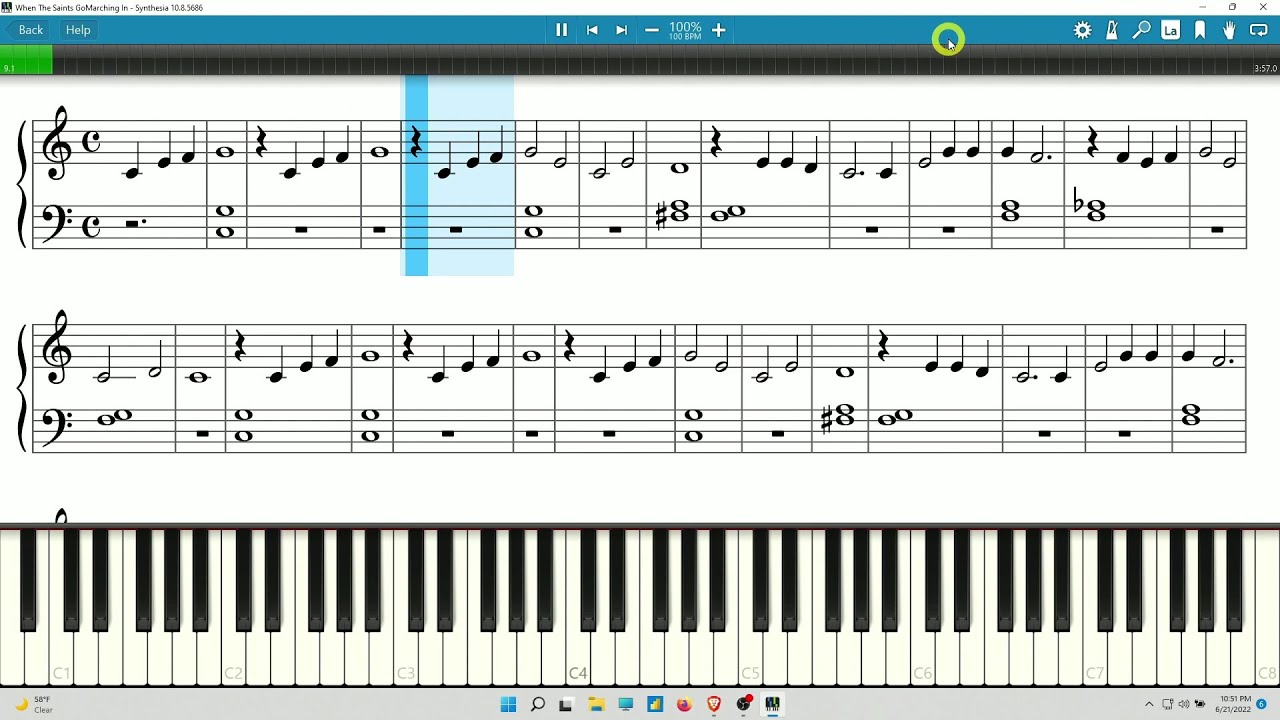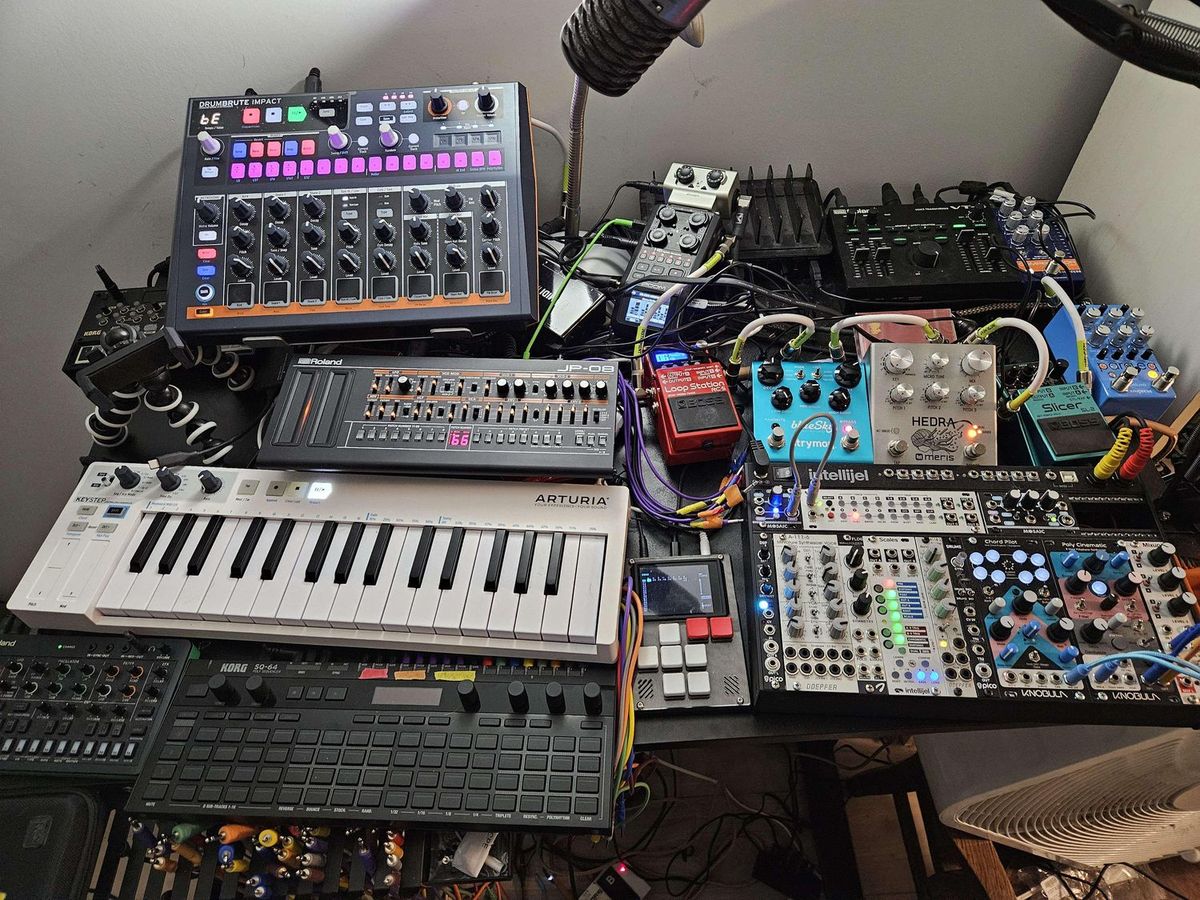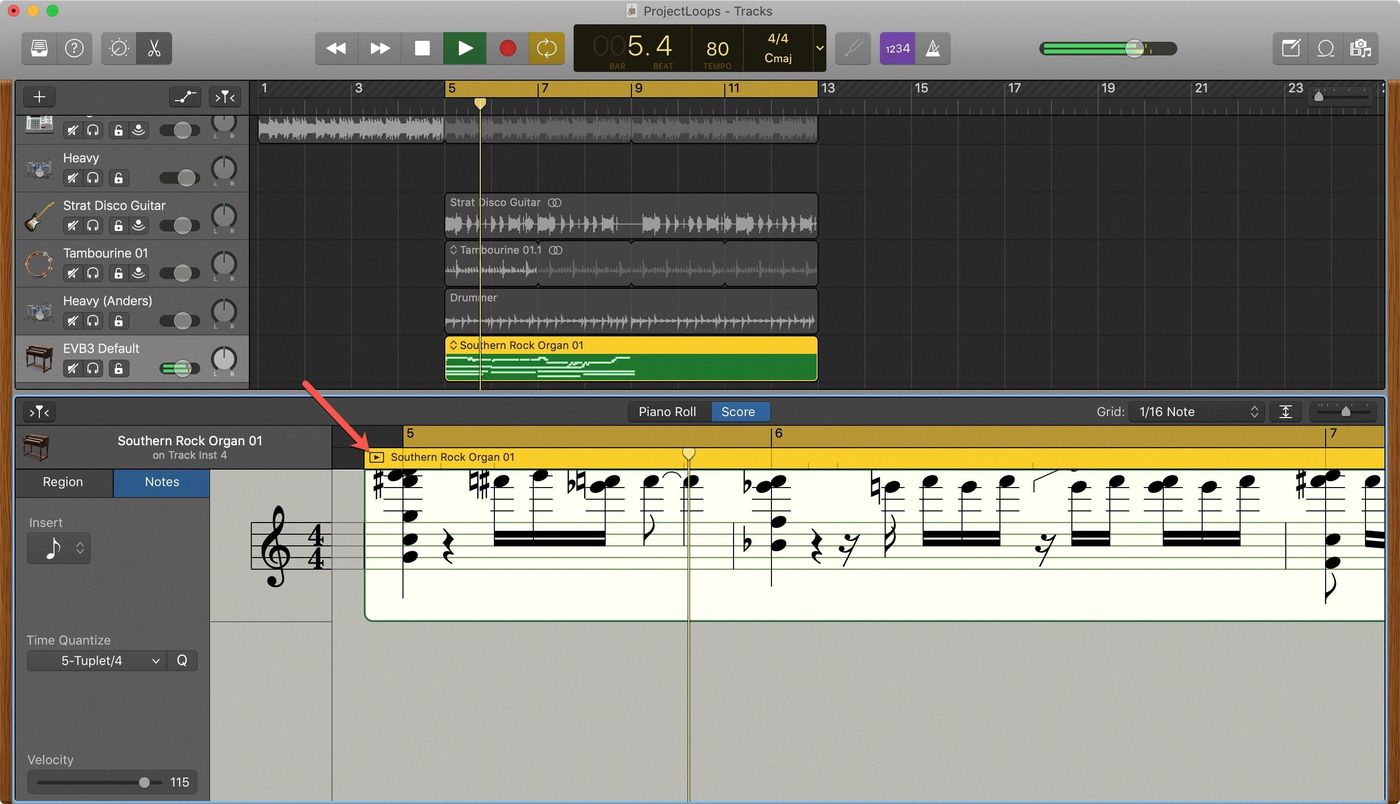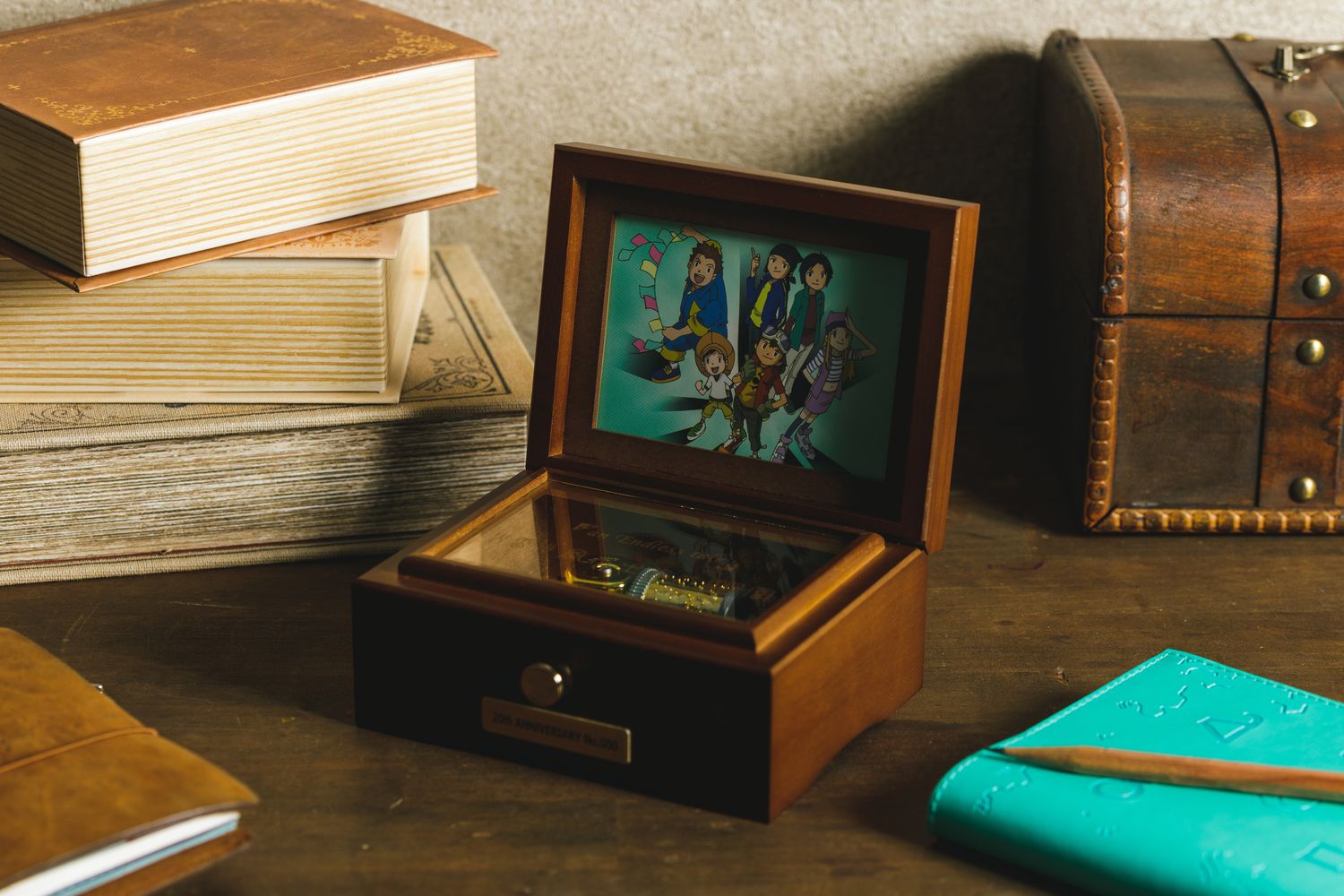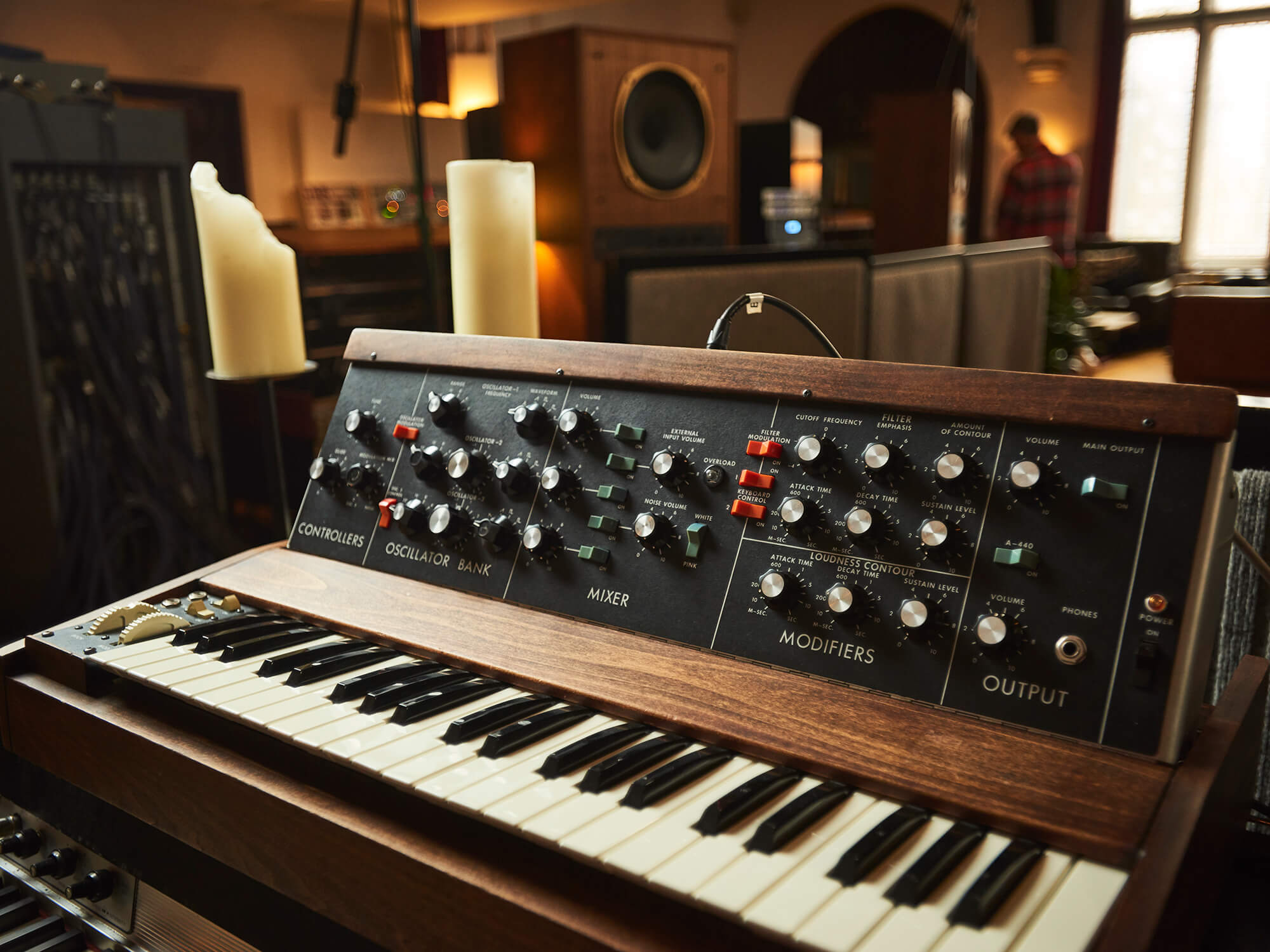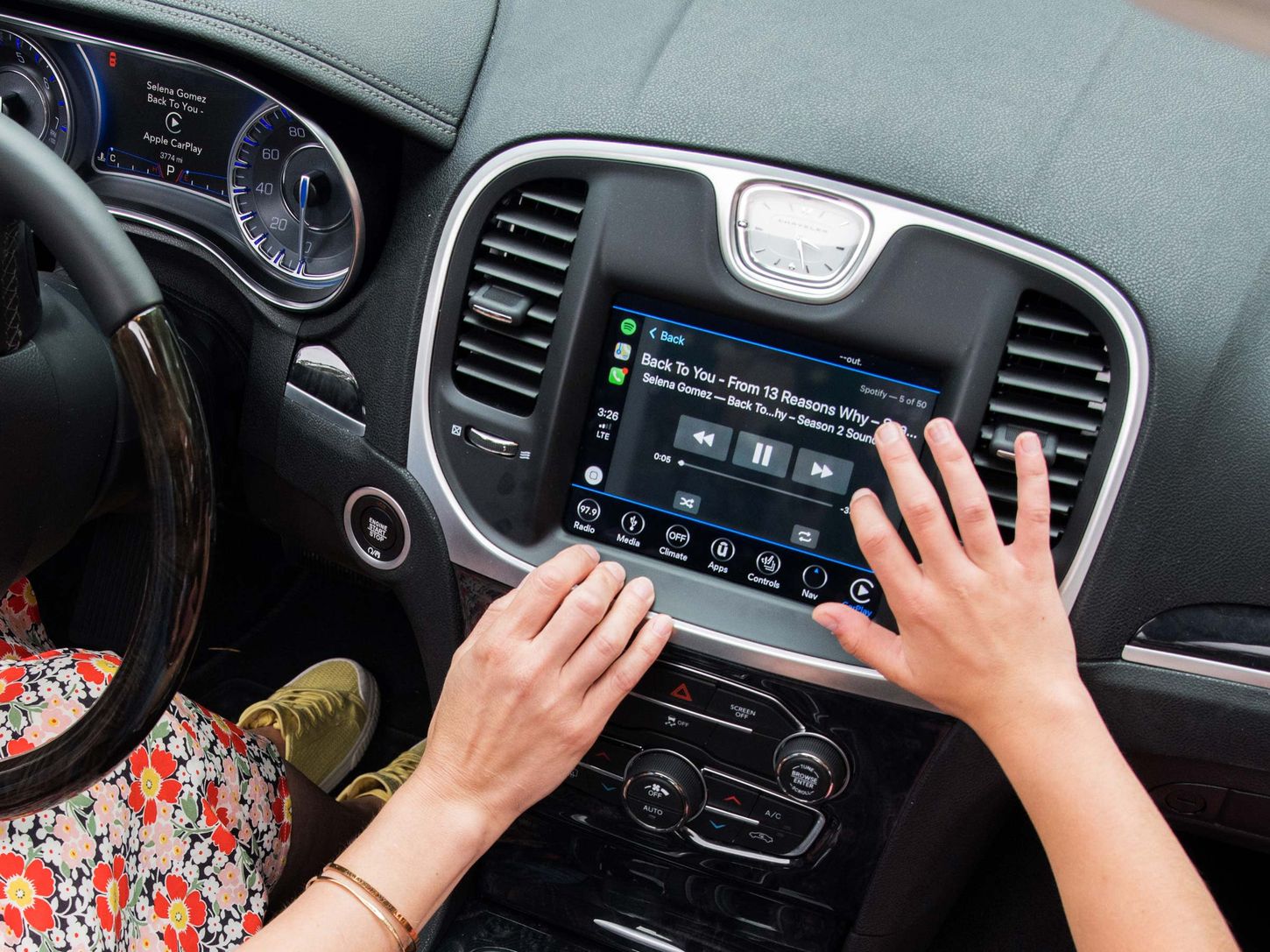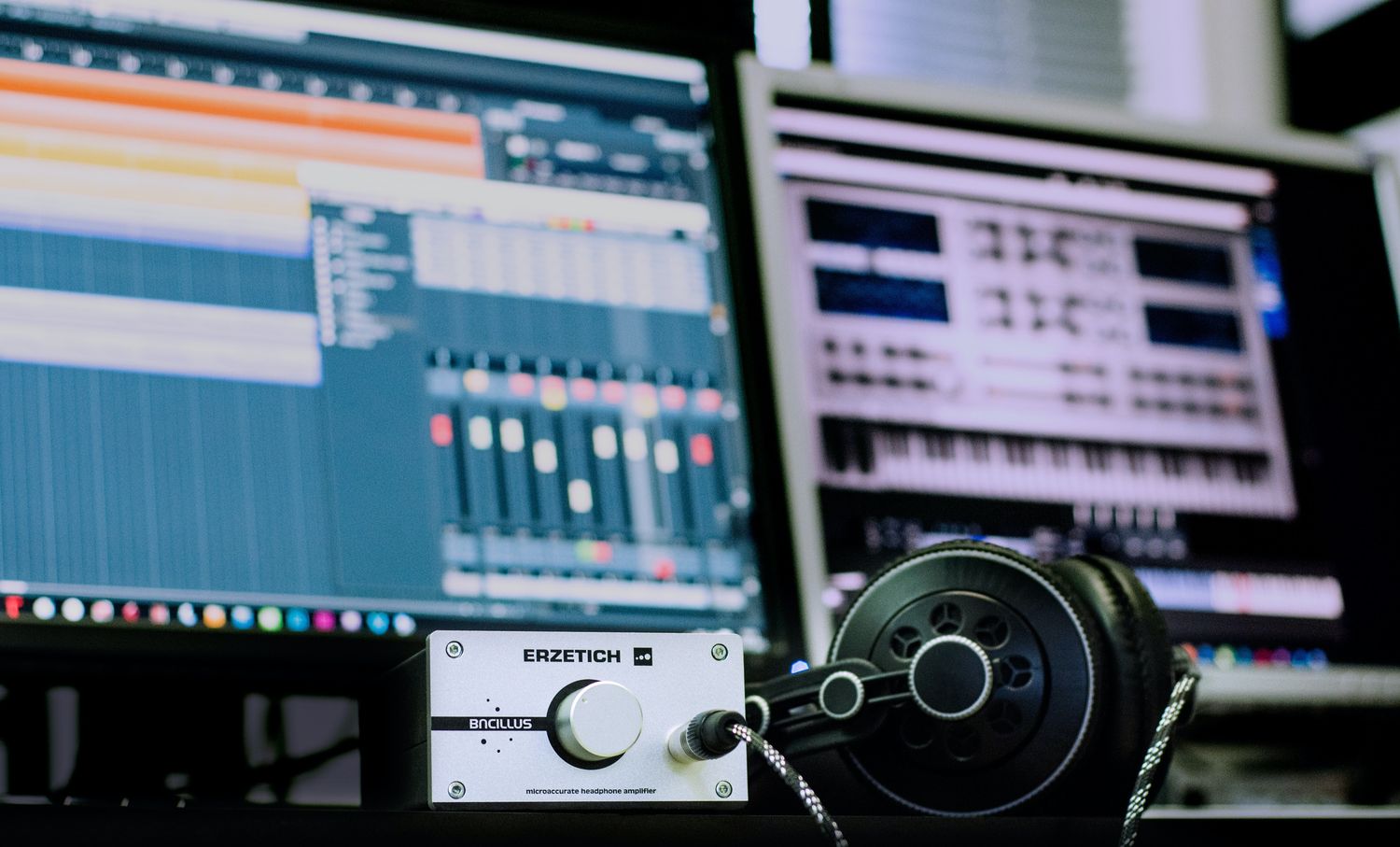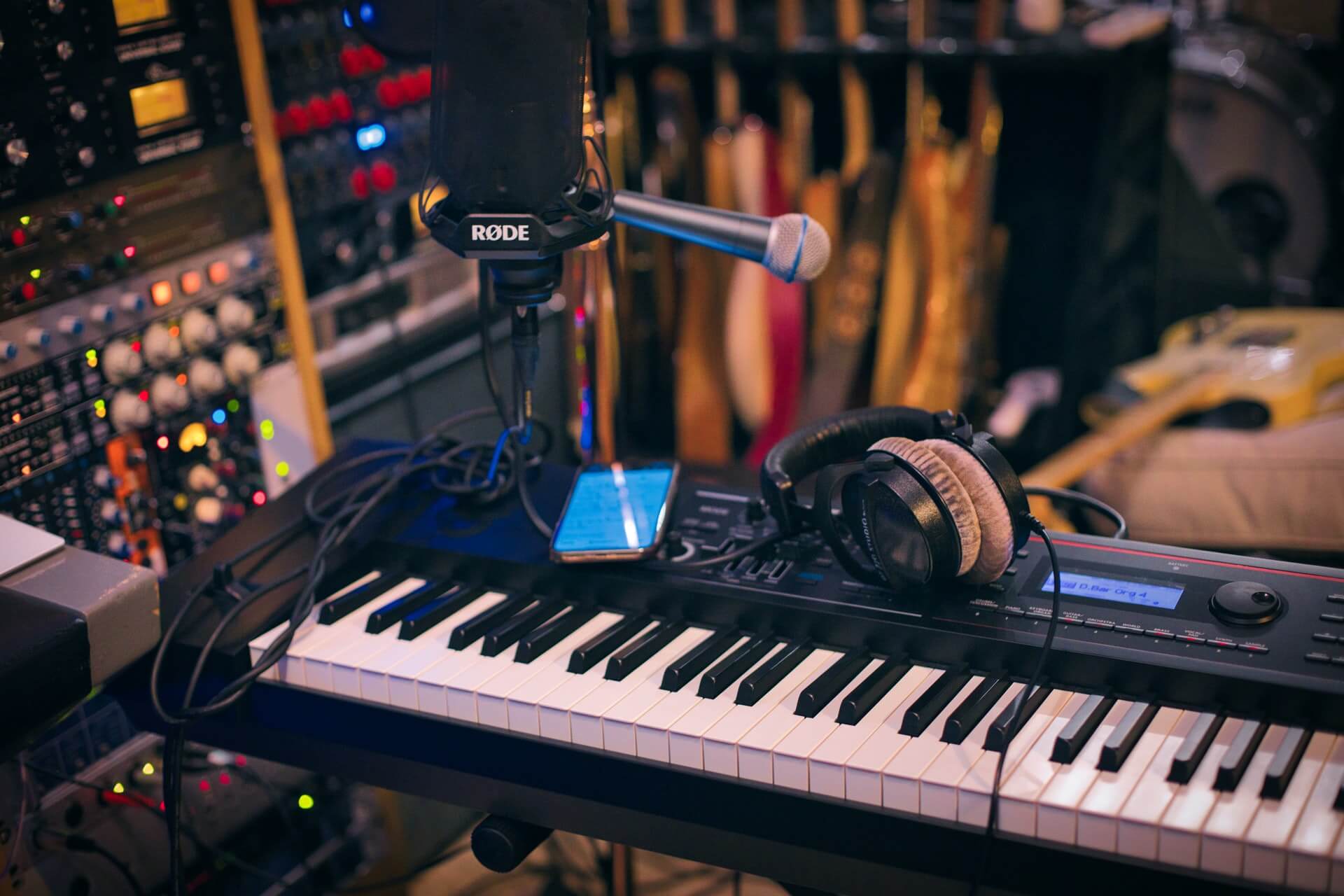Home>Production & Technology>Digital>How To Convert Analog Music To Digital
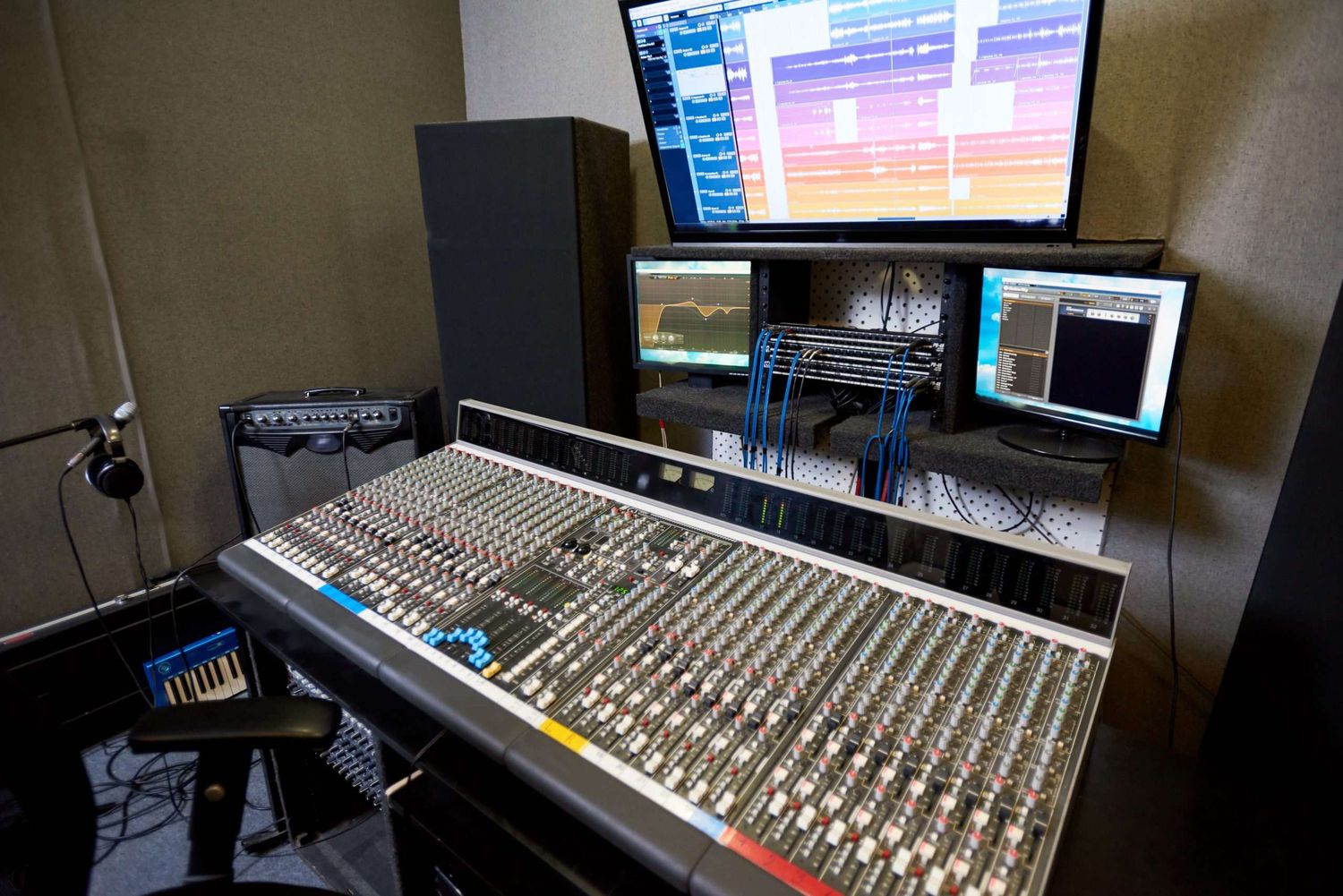

Digital
How To Convert Analog Music To Digital
Published: March 9, 2024
Learn how to convert analog music to digital effortlessly. Discover the best tools and techniques for digitizing your music collection. Preserve your favorite tunes in high-quality digital format today!
(Many of the links in this article redirect to a specific reviewed product. Your purchase of these products through affiliate links helps to generate commission for AudioLover.com, at no extra cost. Learn more)
Table of Contents
Introduction
In a world where technology is constantly evolving, the way we experience and interact with music has undergone a remarkable transformation. While analog music formats such as vinyl records, cassette tapes, and reel-to-reel tapes have a nostalgic charm, the convenience and versatility of digital music cannot be denied. As a result, many music enthusiasts are seeking ways to convert their beloved analog music collections into digital formats, allowing for easy storage, playback, and sharing across various devices.
The process of converting analog music to digital involves capturing the audio from analog sources and encoding it into digital files, typically in formats such as MP3, WAV, or FLAC. This conversion not only preserves the music for future generations but also opens up a world of possibilities for enjoying and managing the music in a digital environment.
In this comprehensive guide, we will delve into the intricacies of converting analog music to digital, exploring the benefits of this transformation, the equipment required, and the step-by-step process to achieve high-quality digital conversions. Whether you are a vinyl aficionado looking to digitize your rare record collection or a cassette tape enthusiast hoping to preserve cherished mixtapes, this guide will equip you with the knowledge and tools to embark on a seamless analog-to-digital music conversion journey.
As we embark on this exploration, it's important to recognize the significance of preserving analog music in a digital format. By doing so, we not only safeguard the musical heritage of the past but also ensure that it remains accessible and enjoyable in the digital age. So, let's dive into the world of analog-to-digital music conversion and unlock the potential of bringing cherished musical memories into the digital realm.
Understanding Analog Music
Analog music refers to sound recordings that are stored and reproduced in a continuous, physical form. This encompasses a wide range of formats, including vinyl records, cassette tapes, and reel-to-reel tapes. Unlike digital music, which is represented as discrete numerical values, analog music captures and reproduces sound waves in a continuous manner. This distinction is fundamental to understanding the unique characteristics and appeal of analog music.
One of the defining features of analog music is its warm and organic sound quality. When music is recorded onto analog formats, the subtle nuances and imperfections of the performance are faithfully preserved. This results in a rich and immersive listening experience that many enthusiasts find captivating. The distinctive crackle of a vinyl record or the slight tape hiss on a cassette tape contributes to the unique charm of analog music, evoking a sense of nostalgia and authenticity.
Furthermore, the physical nature of analog music formats adds a tactile and tangible element to the listening experience. Handling a vinyl record, carefully threading a cassette tape, or operating a reel-to-reel player engages multiple senses and fosters a deeper connection with the music. The album artwork, liner notes, and overall packaging of analog releases also contribute to the holistic experience of enjoying music in its physical form.
Analog music is deeply intertwined with cultural and historical significance. Vinyl records, in particular, have played a pivotal role in shaping music culture and consumption over the decades. From the resurgence of vinyl as a collectible and audiophile-preferred format to the enduring appeal of classic albums, analog music holds a special place in the hearts of music enthusiasts worldwide.
Despite the enduring allure of analog music, there are inherent limitations associated with these formats. Physical degradation, storage constraints, and the inconvenience of playback in the digital age are some of the challenges that enthusiasts face. This has led many individuals to explore the option of converting their analog music collections to digital formats, thereby preserving the essence of analog music while embracing the convenience and accessibility of digital technology.
By gaining a deeper understanding of analog music and its intrinsic qualities, we can appreciate the significance of preserving these musical treasures in a digital format. The next section will delve into the benefits of converting analog music to digital, shedding light on the transformative potential of this process.
The Benefits of Converting to Digital
Converting analog music to digital offers a myriad of compelling advantages that cater to the evolving needs and preferences of music enthusiasts in the digital age. By embracing digital conversion, individuals can unlock new possibilities for enjoying, preserving, and sharing their cherished music collections. Here are the key benefits of transitioning from analog to digital music formats:
-
Preservation and Accessibility: One of the primary benefits of converting analog music to digital is the preservation of audio content in a durable and easily accessible format. Digital files are immune to the physical degradation and wear-and-tear that often afflict analog media over time. By digitizing music collections, enthusiasts can safeguard their favorite albums, rare recordings, and personal creations for future generations to enjoy. Moreover, digital music can be effortlessly stored on various devices, enabling convenient access and playback without the limitations imposed by physical media.
-
Space Efficiency and Organization: Analog music formats, such as vinyl records and cassette tapes, occupy significant physical space. Converting these collections to digital files liberates valuable storage space while enhancing organizational capabilities. Digital music libraries can be meticulously organized, tagged, and categorized, allowing for seamless navigation and quick retrieval of specific tracks or albums. This streamlined approach to music management simplifies the overall listening experience and eliminates the clutter associated with physical media storage.
-
Enhanced Portability and Flexibility: Digital music offers unparalleled portability and flexibility, empowering enthusiasts to enjoy their favorite tunes across a diverse range of devices. Whether it's a smartphone, tablet, laptop, or dedicated music player, digital files can be effortlessly transferred and played back on various platforms. This versatility enables music lovers to curate personalized playlists, create on-the-go listening experiences, and share their music with others without the constraints imposed by analog formats.
-
Improved Audio Quality and Customization: Converting analog music to digital allows for the enhancement and customization of audio quality. Digital files can be encoded in high-resolution formats, preserving the fidelity and detail of the original recordings. Additionally, digital conversion opens up opportunities for audio restoration, noise reduction, and equalization, enabling enthusiasts to refine the sonic characteristics of their music according to personal preferences.
-
Integration with Modern Technology: In today's interconnected digital landscape, the integration of music with modern technology is paramount. Digital music seamlessly integrates with streaming services, digital audio workstations, and online music communities, fostering a dynamic and interactive music ecosystem. By converting analog music to digital, enthusiasts can tap into a wealth of innovative tools and platforms that enrich the overall music experience, from collaborative sharing to immersive listening environments.
In essence, the transition from analog to digital music represents a transformative journey that empowers enthusiasts to preserve, enhance, and engage with their musical passions in a contemporary context. By embracing the benefits of digital conversion, individuals can bridge the gap between tradition and innovation, ensuring that the timeless allure of analog music remains vibrantly alive in the digital realm.
Equipment Needed for Conversion
To embark on the journey of converting analog music to digital, it is essential to assemble the requisite equipment that facilitates the seamless capture and encoding of audio content. The following components form the foundation of a comprehensive analog-to-digital music conversion setup:
Turntable or Cassette Deck:
The cornerstone of digitizing analog music collections is a high-quality turntable for vinyl records or a cassette deck for cassette tapes. These playback devices serve as the initial point of audio retrieval, allowing the analog music to be translated into digital signals. It is imperative to ensure that the turntable or cassette deck is in optimal working condition, with a stylus or tape head that is well-maintained to deliver accurate audio reproduction.
Phono Preamp or Audio Interface:
In order to capture the audio output from the turntable or cassette deck, a phono preamp or audio interface is indispensable. For vinyl records, a phono preamp is utilized to amplify the low-level signal produced by the turntable's cartridge to a line-level signal suitable for digital conversion. Alternatively, an audio interface equipped with phono inputs can serve the same purpose, providing the necessary signal amplification and conversion capabilities.
Computer or Digital Recorder:
A computer or digital recorder serves as the central hub for capturing and encoding the analog audio into digital files. Whether it's a dedicated desktop workstation or a portable laptop, the computing device should have sufficient processing power and storage capacity to accommodate the digital conversion process. Additionally, digital recorders offer a standalone solution for capturing analog audio directly to digital formats, providing flexibility for on-the-go conversion scenarios.
Audio Recording Software:
To facilitate the encoding and processing of analog audio, specialized audio recording software is essential. These software applications enable users to capture, edit, and export audio recordings in various digital formats, ensuring optimal fidelity and compatibility. Popular audio recording software options include Audacity, Adobe Audition, and Steinberg Cubase, each offering a range of features tailored to the needs of analog-to-digital music conversion.
Cables and Connectors:
A robust assortment of cables and connectors is vital for establishing seamless audio connections between the analog playback devices, preamp or audio interface, and the recording equipment. High-quality RCA cables, XLR cables, and adapter connectors ensure reliable signal transmission and minimize interference, contributing to the overall integrity of the digital conversion process.
Storage Media:
Upon successful conversion of analog music to digital files, adequate storage media is essential for housing the digitized audio content. External hard drives, solid-state drives, or cloud storage solutions offer ample capacity for archiving and organizing digital music collections, safeguarding them against loss or degradation.
By assembling the aforementioned equipment, enthusiasts can create a robust and versatile analog-to-digital music conversion setup, laying the groundwork for preserving and enjoying their cherished analog music in the digital domain. Each component plays a crucial role in capturing, processing, and storing the essence of analog music, ensuring a seamless and rewarding transition to the digital realm.
Steps to Convert Analog Music to Digital
Converting analog music to digital involves a series of meticulous steps designed to capture, process, and preserve the audio content in a digital format. By following these steps with precision and care, enthusiasts can ensure the faithful translation of analog music into digital files, ready for seamless integration into modern listening environments. Here's a comprehensive overview of the essential steps involved in the analog-to-digital music conversion process:
-
Setup and Calibration: Begin by setting up the turntable or cassette deck in a suitable environment, ensuring stable positioning and proper alignment. Verify the functionality of the playback device, including the condition of the stylus or tape head, and perform any necessary calibration to optimize audio output.
-
Connectivity and Signal Routing: Establish secure connections between the turntable or cassette deck and the phono preamp or audio interface using high-quality cables and connectors. Ensure that the signal routing is configured to transmit the analog audio output to the input of the preamp or interface, maintaining signal integrity throughout the chain.
-
Phono Preamp Configuration: If utilizing a phono preamp, adjust the settings to accommodate the specific cartridge type and output characteristics of the turntable. Set the appropriate gain levels and equalization settings to match the playback requirements of the analog source, preparing the signal for optimal conversion.
-
Computer Integration: If using a computer for digital conversion, connect the audio interface to the computer via USB or other compatible interfaces. Install and configure the audio recording software, ensuring that the computer recognizes the interface and is ready to receive the incoming analog audio signal.
-
Audio Capture and Monitoring: Initiate the playback of the analog music and monitor the audio signal through the recording software or digital recorder. Verify that the incoming audio levels are within the optimal range, avoiding clipping or distortion while capturing the nuances of the analog source.
-
Recording and Encoding: Commence the recording process, capturing the analog audio in real-time and encoding it into digital files. Select the desired file format and quality settings within the recording software, ensuring that the resulting digital files align with the intended playback and storage requirements.
-
Post-Processing and Tagging: Upon completion of the recording, engage in post-processing tasks such as audio normalization, noise reduction, and track segmentation. Additionally, tag the digital files with relevant metadata, including artist name, album title, track names, and other pertinent information to enhance organization and accessibility.
-
Storage and Backup: Transfer the digitized audio files to a designated storage location, whether it's an external hard drive, cloud storage service, or archival media. Implement backup strategies to safeguard against data loss, ensuring the long-term preservation of the digital music collection.
By meticulously following these steps, enthusiasts can effectively convert their analog music to digital, preserving the essence of the original recordings while embracing the benefits of digital technology. This methodical approach ensures that the transition from analog to digital is executed with precision and care, culminating in a seamless and rewarding conversion experience.
Tips for Quality Conversion
Achieving a high-quality conversion from analog music to digital entails attention to detail and adherence to best practices throughout the entire process. Here are essential tips to ensure a seamless and superior conversion experience:
-
Optimize Playback Equipment: Prior to conversion, ensure that the turntable or cassette deck is well-maintained and calibrated for optimal playback. This includes verifying the condition of the stylus or tape head, as well as confirming proper alignment and tracking force to extract the best possible audio signal.
-
Signal Chain Integrity: Maintain the integrity of the signal chain by using high-quality cables and connectors to minimize signal degradation and interference. Secure connections between the playback device, preamp or interface, and recording equipment are crucial for preserving the fidelity of the analog audio.
-
Monitoring and Levels: Continuously monitor the audio levels during recording to prevent clipping or distortion. Adjust input levels to capture the full dynamic range of the analog source without compromising audio quality. Additionally, perform test recordings to fine-tune input levels and ensure optimal signal-to-noise ratio.
-
File Format Selection: Choose the appropriate file format and quality settings for digital encoding based on the intended use and storage requirements. Lossless formats such as WAV or FLAC are ideal for archival purposes, while compressed formats like MP3 or AAC offer efficient storage and playback options for portable devices.
-
Noise Reduction and Restoration: Utilize noise reduction tools and audio restoration techniques to address inherent imperfections in the analog source, such as surface noise on vinyl records or tape hiss on cassette tapes. Careful application of these processes can significantly enhance the overall audio fidelity.
-
Metadata Tagging: Embed comprehensive metadata within the digital files, including artist name, album title, track names, and genre information. This facilitates organized cataloging and effortless navigation within digital music libraries, enhancing the overall user experience.
-
Backup and Redundancy: Implement robust backup strategies to safeguard the digitized music collection against potential data loss. Utilize redundant storage solutions, cloud backups, and periodic data verification to ensure the long-term preservation of the digital music archive.
By incorporating these tips into the analog-to-digital conversion process, enthusiasts can elevate the quality and integrity of their digital music collections, ensuring that the essence of analog music is faithfully preserved in the digital realm. These best practices empower individuals to embark on a transformative journey of preserving cherished musical memories while embracing the benefits of modern digital technology.
Conclusion
In the ever-evolving landscape of music consumption and technology, the process of converting analog music to digital represents a pivotal bridge between tradition and innovation. As we have explored the intricacies of analog music, delved into the benefits of digital conversion, and outlined the essential equipment and steps involved, it becomes evident that the preservation of analog music in a digital format holds profound significance for music enthusiasts worldwide.
The journey of converting analog music to digital is not merely a technical endeavor; it is a testament to the enduring legacy of music and the profound emotional connections it fosters. By embracing digital conversion, individuals embark on a transformative odyssey that transcends the boundaries of time and technology, ensuring that the timeless allure of analog music remains vibrantly alive in the digital realm.
Through the preservation and accessibility afforded by digital formats, cherished albums, rare recordings, and personal creations are safeguarded for future generations to enjoy. The space efficiency and organizational capabilities of digital music libraries liberate enthusiasts from the constraints of physical media, offering seamless navigation and quick retrieval of musical treasures. The enhanced portability and flexibility of digital music empower individuals to curate personalized listening experiences and share their musical passions across diverse platforms.
Furthermore, the integration of modern technology with digital music opens up a world of possibilities, from collaborative sharing to immersive listening environments, enriching the overall music experience. The meticulous equipment setup and meticulous steps involved in the conversion process ensure that the essence of analog music is faithfully translated into digital files, preserving the warmth and authenticity of the original recordings.
As we conclude this exploration, it is evident that the transition from analog to digital music is not merely a technical process; it is a celebration of musical heritage, a testament to the enduring power of music, and a commitment to preserving cherished memories for generations to come. By embracing the benefits of digital conversion and adhering to best practices, individuals can embark on a seamless and rewarding journey of preserving and enjoying their beloved analog music in the digital domain.
In essence, the conversion of analog music to digital is a harmonious fusion of tradition and innovation, ensuring that the timeless allure of analog music resonates vibrantly in the digital age. It is a testament to the enduring legacy of music and the profound emotional connections it fosters, transcending the boundaries of time and technology.

